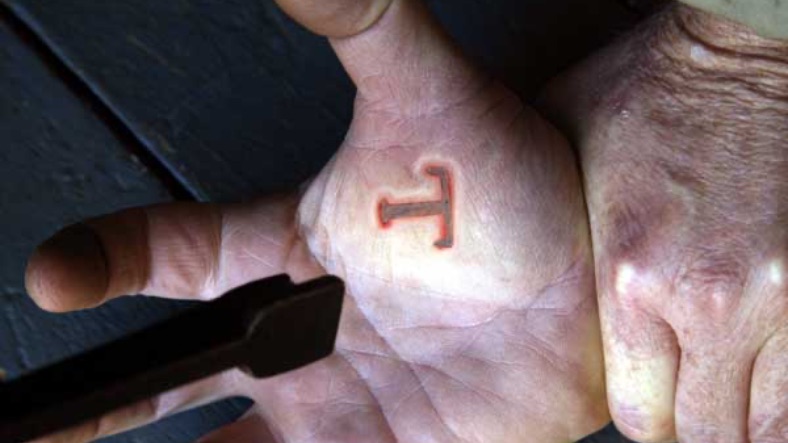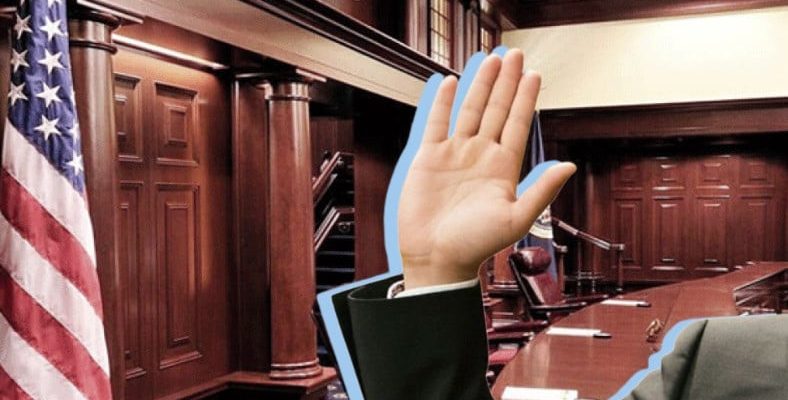In many countries, it is common practice to raise the right hand first when taking an oath before the law or in any other form. So, what is the origin of raising the right hand while taking an oath, and why is it still used today?
Citizens of many countries take an oath to make a true statement before the judiciary when heads of state take office or raises his right hand. While examining the origin of this in this article, it is useful to underline that actions are as important as words, especially within the framework of legal rules.
For lawyers, although the law consists of the power of words, actions as well as words constitute a large part of the judiciary. “Legal gesture” called Turkish legal gesture One of these movements translated as raising the right hand, in its simplest definition; It can be called a physical act that one must do before taking any oath.
Physical gestures have been used since medieval times
Before addressing the current use of the right-handed gesture, Antique And Middle Ages Let’s get some clarity on the physical gestures used in their societies. Since those ages, we can see that “gestures” have been prominently featured in almost all major legal events and transactions.
First, gestures marked the establishment and dissolution of legal relations. For example; In ancient Mesopotamian law, when a dying man wanted to formally designate an heir or heir, he held that person’s hand.
Second, gestures could indicate that legal agreements were both made and broken. For example, the “handshake” gesture; In medieval Welsh, English, French and Spanish law, it indicated the conclusion of a contract.

Third, gestures; It also meant the transfer of property, especially land. In ancient Mesopotamian law, a seller transferring a piece of land to a buyer could remove his own foot from the land, replacing it with the buyer’s foot, and confirming the sale.
Fourth, gestures; It also meant an oath. In early Greek and Roman law, the person who took the oath touched an altar or other object of religious significance. The same practice was known in early medieval England. In 13th century Germany, an sworn witness showed his hand with two fingers outstretched. This act, as in Early Greek and Roman law, It was used as a symbolic representation of touching an object while taking an oath.
Fifthly; In cases, gestures were also used to reveal the intention or will of the parties. In early medieval German law, a witness could formally indicate that he supported or endorsed another party by holding that party’s arm or shoulder. A witness could non-verbally demonstrate by clasping his hands that he refused to give evidence or take an oath.
The painful past of the ritual of raising the right hand

Joe Biden raises his right hand to be sworn in as the 46th President of the United States.
“Please raise your right hand to swear” The phrase appears frequently as a commonplace expression in modern courtrooms, and is required of all who stand up to testify at the trial.
Many trace the origins of this practice to the central criminal court of 17th century London. From the late 17th to the early 20th centuries, judges in London courts could choose from a wide variety of sentences, ranging in severity from a full pardon to the death penalty.
But judges also lacked sophisticated tools to keep records of the accused to help them evaluate which sentence was most appropriate for the accused’s circumstances. As a result, judges could sometimes choose to punish offenders with stigma.

The word meaning is the application of a cautery iron to the body of the convicted accused. stamping, it was usually applied to convicts who were tolerated by the court. For example, convicts who successfully defended the “benefit of the clergy,” a practice that freed an accused of the Church from the death penalty, were shunned so that they could not reap the same benefits. (right hand with “T” for stealing, “F” for health, or “M” for murder) would be stamped.
Similar stamps were given to convicts found guilty of murder rather than murder. As such, in the event that previously convicted persons appear before the court again, People were asked to raise their right hands.
In this way, the judge could see whether the other person had committed any crime or whether he subsequently benefited from an amnesty.
RELATED NEWS
Odd Traditions of the Middle Ages, Also Known as the Era of Evil
The ritual of raising the right hand, which began to be used in the 17th century, is still widely used today, although no “stigma” is applied to criminals at the moment.
